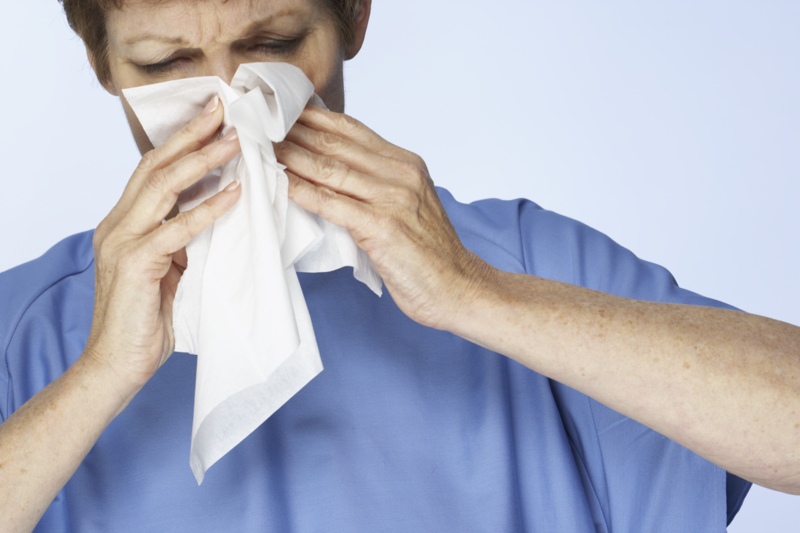
MONDAY, Dec. 6 (HealthDay News) — A new set of guidelines designed to help doctors diagnose and treat food allergies was released Monday by the U.S. National Institute of Allergy and Infectious Diseases (NIAID).
In addition to recommending that doctors get a thorough medical history from a patient when a food allergy is suspected, the guidelines also try to help physicians distinguish which tests are the most effective for determining whether someone has a food allergy.
Allergy to foods such as peanuts, milk and eggs are a growing problem, but how many people in the United States actually suffer from food allergies is unclear, with estimates ranging from 1 percent to 10 percent of children, experts say.
“Many of us feel the number is probably in the neighborhood of 3 to 4 percent,” Dr. Hugh A. Sampson, an author of the guidelines, said during a Friday afternoon news conference detailing the guidelines. “There is a lot of concern about food allergy being overdiagnosed, which we believe does happen.”
Still, that may still mean that 10 to 12 million people suffer from these allergies, said Sampson, a professor of pediatrics and dean for translational biomedical sciences at the Mount Sinai School of Medicine in New York City.
Another problem is that food allergies can be a moving target, since many children who develop food allergies at an early age outgrow them, he noted. “So, we know that children who develop egg and milk allergy, which are two of the most common allergies, about 80 percent will eventually outgrow these,” he said.
However, allergies to peanuts, tree nuts, fish and shellfish are more persistent, Sampson said. “These are more often than not lifelong,” he said. Among children, only 10 percent to 20 percent outgrow them, he added.
The 43 recommendations in the guidelines were developed by NIAID after working jointly with more than 30 professional groups, advocacy organizations and federal agencies. Rand Corp. was also commissioned to perform a review of the medical literature on food allergies. A summary of the guidelines appears in the December issue of the Journal of Allergy and Clinical Immunology.
One thing the guidelines try to do is delineate which tests can distinguish between a food sensitivity and a full-blown food allergy, Sampson noted. The two most common tests done to diagnose a food allergy — the skin prick and measuring the level of antigens in a person’s blood — only spot sensitivity to a particular food, not whether there will be a reaction to eating the food.
To determine whether the results of these two tests indicate a true allergy, other tests and a food challenge are often needed, Sampson explained.
When only the skin prick and blood tests are used, they can lead to children being put on very restrictive diets, he said. However, in many cases when these children face a food challenge it is discovered that they are not truly allergic to many foods.
“Diagnosing a food allergy is not just doing a skin test, or not just doing a blood test, or not even having a report of a food allergy. It takes a combination of good medical history, as well as laboratory tests and in some cases a food challenge, to make the appropriate diagnosis,” Sampson said.
The new guidelines also define what foods are common allergens, what the symptoms of an allergic reaction are and how to manage an allergy, depending on which food is the allergen.
And the guidelines also note there is no benefit to restricting a pregnant woman’s diet in hope of preventing allergies in her baby. “There is not sufficient evidence to show that altering the maternal diet or altering the infant’s diet will have any impact on development of food allergy or allergic disease,” Sampson said.
Commenting on the guidelines, Dr. Gary Kleiner, an associate professor of clinical pediatrics at the University of Miami Miller School of Medicine, said that “this is a very good document that hopefully will be helpful to physicians.”
Kleiner believes the guideline recommending a skin test rather than a blood test for initial allergy screening is good. The skin test is more sensitive and a negative result is very helpful, because it tells you the patient will be able to tolerate the food, he said. “Many times the blood test gives false positives,” he explained.
Other recommendations, such as not giving infants soy milk instead of cow’s milk, are also a step in the right direction, Kleiner said.
In addition, the recommendations about how to treat an severe allergic reaction will give doctors, especially emergency room physicians, more confidence in treating them aggressively, he said.
More information
For more on food allergies, visit the U.S. National Library of Medicine.

